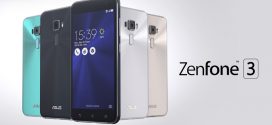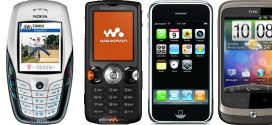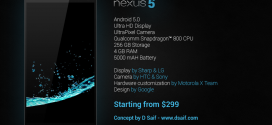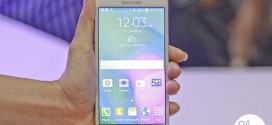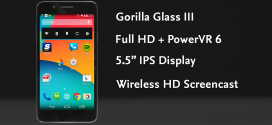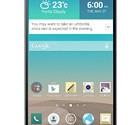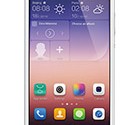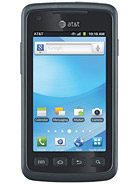 Today we shall be reviewing the Samsung Rugby Smart. This is a relatively new phone since it came out this year. Also, considering the fact that it came out this year you are allowed to have high expectations for this phone. We shall see if it fits those expectations in the end. The Samsung Rugby Smart was released for AT&T and it may not fit all the tastes of all the people. However it looks great and has a few interesting features. For example, the locking mechanism on the back of the phone. Few phones actually have a mechanism for locking the hood over the battery and SIM. This one does, a sort of dial which you turn towards Lock or Unlock. It’s a really neat design considering the texture of the hood and the alignment with the camera, very symmetrical and such.
Today we shall be reviewing the Samsung Rugby Smart. This is a relatively new phone since it came out this year. Also, considering the fact that it came out this year you are allowed to have high expectations for this phone. We shall see if it fits those expectations in the end. The Samsung Rugby Smart was released for AT&T and it may not fit all the tastes of all the people. However it looks great and has a few interesting features. For example, the locking mechanism on the back of the phone. Few phones actually have a mechanism for locking the hood over the battery and SIM. This one does, a sort of dial which you turn towards Lock or Unlock. It’s a really neat design considering the texture of the hood and the alignment with the camera, very symmetrical and such.
It looks good, that much we’ve gathered, but let’s not waist anymore time and commence this little review, shall we ?
GENERAL
We shall start by looking at the more general aspects of the Samsung Rugby Smart, things such as the supported networks and the announcement and release dates. The networks supported by this device are both 2G and 3G : GSM 850 / 900 / 1800 / 1900 ( as the 2G networks ) and HSDPA 850 / 1900 ( as the 3G networks ). The Samsung Rugby Smart was announced in February 2012 and was released shortly after in March 2012. As I’ve said before, this phone is relatively new.
BODY
Following up is the part of the review where we shall analyze the physical features of the Samsung Rugby Smart, things such as : the dimensions, the weight and any other distinguishable features which can set it apart from the rest. The Samsung Rugby Smart is around 122.4 x 65.9 x 12.2 mm big and weighs somewhere around 119 grams. Also, the Samsung Rugby Smart has more protection than a Swiss Bank. This device has the following : MIL-STD-810F certified salt, dust, humidity, rain, vibration, solar radiation, transport and thermal shock resistence, IP67 certified dust and water proof for up to 1m depth or 30 minutes time. If it’s worth mentioning, the Samsung Rugby Smart also has Touch-Sensitive Controls instead of buttons.
DISPLAY
We shall now move on towards analyzing the finer points of the display of the Samsung Rugby Smart, points such as : the type, size, resolution and pixel density of the screen as well as any existing signs that would distinguish it from the rest of the Android devices around. The Samsung Rugby Smart has a Super AMOLED capacitive touchscreen with around 16 million colors. The screen’s size is around 3.7 inches and the screen resolution reaches 480 x 800 pixels. The Samsung Rugby Smart’s screen has a pixel density of approximately 252 ppi, which is more than good enough in my opinion.The Samsung Rugby Smart also has Multitouch and TouchWiz UI v.40 installed on it should you choose to activate it.
SOUND
Moving on to the sound part of this review where we shall analyze the audible capabilities of the Samsung Rugby Smart. We shall see here the alert types, the loudspeaker and 3.5 mm jack as well as whether or not this device has any means of enhancing the sound whatsoever. Apparently, the Samsung Rugby Smart doesn’t have any sound enhancement method installed on it, which makes it relatively “basic” as far as sound is concerned. Meaning that it has : vibration, MP3 and WAV ringtones; a loudspeaker and a 3.5 mm jack. No more to say about it on this part.
MEMORY
This part of the review shall cover the memory of the Samsung Rugby Smart, mainly things such as the RAM memory and internal storage space, as well as means of expanding that storage space. The RAM memory of the Samsung Rugby Smart isn’t all that great since the device only has 512 MB of RAM. The internal storage space of the Samsung Rugby Smart is around 4 GB and if you desire more you are always welcome to use the Micro SD card slot to expand the storage space with up to 32 GB.
DATA CONNECTION
Moving on to the data connectivity of the Samsung Rugby Smart where we shall be analyzing things such as the GPRS and EDGE of the device, the speed and WLAN as well as the USB and Bluetooth connections. The Samsung Rugby Smart has both GPRS and EDGE although I have no idea what class they are since it doesn’t specify. The speeds reached by the Samsung Rugby Smart are both HSDPA and HSUPA but I have no idea how many MB/s at each since, again, it isn’t specified. The WLAN of the Samsung Rugby Smart is a Wi-Fi 802.11 b/g with Wi-Fi hotspot. Also, the Bluetooth of the Samsung Rugby Smart is there with god knows what version. We do know, however, that the Bluetooth has A2DP. The USB connection of the Samsung Rugby Smart is MicroUSB v2.0.
CAMERA
This part of the review covers the finer points of the camera of the Samsung Rugby Smart, to be more precise : the main and secondary cameras as well as their features and capabilities. The main camera of the Samsung Rugby Smart is a 5 MP one. It is capable of photographing at resolutions as big as 2592 x 1944 pixels. The features of the Samsung Rugby Smart’s main camera include and are limited to : autofocus, LED flash, geo-tagging and touch focus. The 5 MP camera of this device is also capable of recording at around 720p HD with who knows how many frames per second. The Samsung Rugby Smart also has a Secondary 1.3 MP frontal camera with no features of its own.
BATTERY LIFE
This part of the review shall cover the battery of the Samsung Rugby Smart, its type and the time it can function. The battery of the Samsung Rugby Smart is a standard Li-Ion 1650 mAh battery. It is capable of running for around 384 hours in stand-by mode and up to 8 hours of talk time.
HARDWARE
This part covers the three great components of the hardware of this device : the processor, the graphics card and the mother board. The processor of the Samsung Rugby Smart is a Single-Core 1.4 GHz Scorpion. Scorpion processors usually come with Qualcomm chipsets, so the chipset is a Qualcomm Snapdragon. To top it all off, the graphics card is an Adreno 205 GPU. However flashy it may sound, this configuration isn’t all that powerful especially for 2012.
SOFTWARE
The operating system of the Samsung Rugby Smart is what we’re going to be looking at in this part. That and whether or not we have the possibility of updating to a better version. The OS installed on the Samsung Rugby Smart is Android OS v2.3.6 Gingerbread. Being a 2012 phone you’d expect it to come out with Ice Cream Sandwich. However this phone doesn’t even have a future update to ICS to its name.
FEATURES
In this part we shall analyze the more “random” features of the device, that and its capabilities and practicality. The sensors of the Samsung Rugby Smart are : Accelerometer, Proximity and Compass. The messaging on this device can be done via : SMS ( with threaded view ), MMS, E-Mail, Push Mail, IM and RSS. The browser of the Samsung Rugby Smart uses HTML and has support for Adobe Flash. The Samsung Rugby Smart doesn’t have a radio but I’ve explained in the past how to fix that. The Samsung Rugby Smart also has a GPS with A-GPS support and Java via Java MIDP emulation. The only color available for the Samsung Rugby Smart is Black.
Here is a list of some of the things this device can do :
- SNS integration
- MP4/WMV/H.264/H.263 player
- MP3/WAV/eAAC+ player
- Organizer
- Image/video editor
- Document viewer
- Google Search, Maps, Gmail, YouTube, Calendar, Google Talk, Picasa integration
- Voice memo/dial/commands
- Predictive text input
This concludes our little review of the Samsung Rugby Smart. If you feel that anything is lacking from this review feel free to leave your suggestions for things which should be added in the comment section below and I shall be sure to take them into consideration when writing my future projects.
If you desire to purchase this phone feel free to click HERE.


